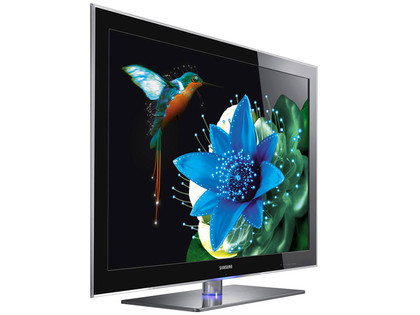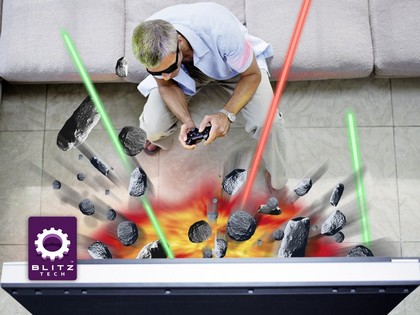3D gaming: everything you need to know
Why Gran Turismo 5 is 3D gaming's 'Avatar'
2010 is hotting up to be the year of the great motion controller battle - the year of the Sony Arc versus the Nintendo Wii MotionPlus versus Microsoft's Project Natal. Yet it is interesting to note that of those three console giants it is only Sony, to date, that has been quick to embrace new 3D tech.
Different types and sizes of 3D TVs will give gamers varying degrees of "depth" projected out of the screen. However, there is a potential issue here for games developers working with motion controllers, because the two technologies could combine badly, and only service to annoy and confuse gamers, if they are not easily and accurately able to simulate touching 3D objects via their expensive new 3D TV.
Might this be a key stumbling block for those devs that want to try to combine new motion control techniques with games that make use of 3D displays?

SAMSUNG 3D TV: But might differences in size and standards confuse gamers?
"It will be technically difficult to match up user perceptions of space with what the motion control hardware can capture," says Cohort Studios' Peter Walsh. Although he remains positive about the possibilities, adding:
"In time these limitations will be overcome and it could produce a new style of augmented reality. At Cohort Studios, we think the new developments in controller technology and 3D TV have positive implications for the future. On their own, each provides a great leap forward for increasing game immersion – but together they can change the playing field.
Walsh and most other games devs agree that there is still a lot of work to be done. Not least to make 3D glasses less intrusive and harder wearing, and to standardise the output of 3D TVs so game developers have a predictable (and commercially-viable) platform to work with.
Sign up for breaking news, reviews, opinion, top tech deals, and more.
The UK leads 3D gaming innovation
Back to the here and now, in addition to the game version of Avatar, there has been one other console title to date that works in in full S-3D (with a 3D TV) on the Xbox 360 and the PS3, which is the XBLA and PSN game Invincible Tiger, from the one of the UK's largest independent developers, Blitz Games Studios.

BLITZ: UK Studio is world-leader in 3D game development
TechRadar spoke at length with Andrew Oliver, Blitz's Chief Technical Officer and a vocal (and early) exponent of 3D gaming on consoles.
"Putting the rubbish old anaglyph 3D behind us, the recent 3D gaming tech was initially developed by Nvidia around 2000 or 2001," Oliver tells us. "However, while they were doing some interesting stuff with CRT monitors, the whole thing was put on the back burner with the introduction of LCD monitors with lower refresh rates," he adds, explaining why the games industry has not embraced 3D PC gaming sooner.
"It has always been there in the background on the PC, but with Nvidia's solution – and more recently with ATI's own solution – they still kind of 'adapt' other people's games. They take games that have already been written and then they put these extra drivers in to give you two views," Oliver adds. "It works pretty effectively, but every now and then you see where programmers have cheated a bit and put flat billboards into games, or whatever, and it is kind of really obvious."
For this reason both Nvidia and ATI have been encouraging game developers to make 'native 3D' and games specifically designed for 3D – so that the developers can be sure to fix those types of glitches and problems that might spoil the illusion, with PC titles such as Blizzard's mighty MMO World of Warcraft and Rocksteady's sublime Batman: Arkham Asylum being two of the best and most high profile of these from last year.
Current page: Motion plus full 3D: a shotgun marriage?
Prev Page A brief history of 3D gaming Next Page Gran Turismo 5 is 3D gaming's 'Avatar'